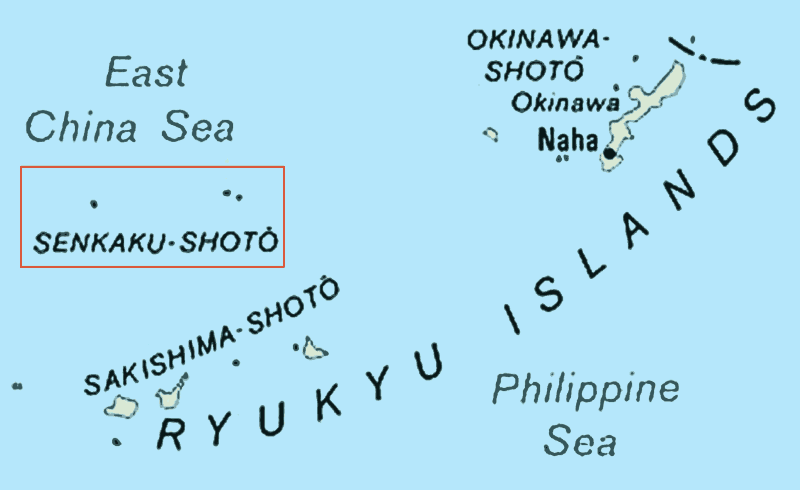The Yomiuri Shimbun

Prime Minister Shinzo Abe shakes hands with U.S. Defense Secretary Jim Mattis, as Defense Minister Tomomi Inada looks on, at the Prime Minister’s Office in Tokyo on Friday.

Visiting U.S. Defense Secretary Jim Mattis clearly said during talks with Prime Minister Shinzo Abe on Friday afternoon that the Senkaku Islands in Okinawa Prefecture are within the scope of Article 5 of the Japan-U.S. Security Treaty, which obliges the United States to defend Japan, according to a senior government official who attended the meeting.
At the opening of the meeting, Abe said he is certain the two countries “can demonstrate in our country and abroad that the Japan-U.S. alliance is unshakable.”
In response, Mattis said that he intended to make clear during the meeting that Article 5 of the security treaty will be important five years or 10 years from now, just as it was a year ago or five years ago.
Mattis arrived in Tokyo on the day to hold talks with the prime minister, Defense Minister Tomomi Inada and other members of Abe’s Cabinet to exchange views on the security environment in East Asia and to address mutual security concerns.
Mattis arrived in Tokyo on the day to hold talks with the prime minister, Defense Minister Tomomi Inada and other members of Abe’s Cabinet to exchange views on the security environment in East Asia and to address mutual security concerns.
The new U.S. defense chief’s visit to Japan marks the first by a U.S. Cabinet member under the administration of President Donald Trump.
The ministerial meeting with Inada is scheduled for Saturday, after which they will hold a joint press conference.
During these talks, the two sides are also expected to confirm that the United States will firmly uphold the “nuclear umbrella” (see below) over Japan in its defense.
During his presidential election campaign last year, Trump was ambiguous about defending the Senkakus and also suggested that if Japan doesn’t contribute its due share to shouldering the burden of stationing U.S. forces in Japan, it would be acceptable for Japan to possess its own nuclear weapons to confront North Korea’s nuclear threat.
During these talks, the two sides are also expected to confirm that the United States will firmly uphold the “nuclear umbrella” (see below) over Japan in its defense.
During his presidential election campaign last year, Trump was ambiguous about defending the Senkakus and also suggested that if Japan doesn’t contribute its due share to shouldering the burden of stationing U.S. forces in Japan, it would be acceptable for Japan to possess its own nuclear weapons to confront North Korea’s nuclear threat.
These remarks caused apprehension on the Japanese side.
Confirmation by Mattis of the U.S. commitment to defend the Senkakus and maintain nuclear deterrence apparently aims to demonstrate that the position of the Japan-U.S. alliance with regard to Japan’s defense remains unchanged under the Trump administration.
At the ministerial meeting on Saturday, the defense chiefs will also confirm their intent to steadily move forward with the plan to relocate the U.S. Marine Corps’ Futenma Air Station in Ginowan, Okinawa Prefecure, to the Henoko district of Nago in the same prefecture, and other plans to reorganize the U.S. forces stationed in Japan.
Inada said at a press conference after a Cabinet meeting on Friday that at the ministerial meeting, she intends to “exchange candid views [with Mattis] on how to strengthen the Japan-U.S. alliance, the reorganization of U.S. forces and other matters to bring a greater level of certainty to the alliance.”

■ “Nuclear umbrella”
The idea that nuclear attacks can be deterred if a country makes clear its position that it would use its nuclear arsenal to retaliate if its allies came under nuclear attack from a third party.
Confirmation by Mattis of the U.S. commitment to defend the Senkakus and maintain nuclear deterrence apparently aims to demonstrate that the position of the Japan-U.S. alliance with regard to Japan’s defense remains unchanged under the Trump administration.
At the ministerial meeting on Saturday, the defense chiefs will also confirm their intent to steadily move forward with the plan to relocate the U.S. Marine Corps’ Futenma Air Station in Ginowan, Okinawa Prefecure, to the Henoko district of Nago in the same prefecture, and other plans to reorganize the U.S. forces stationed in Japan.
Inada said at a press conference after a Cabinet meeting on Friday that at the ministerial meeting, she intends to “exchange candid views [with Mattis] on how to strengthen the Japan-U.S. alliance, the reorganization of U.S. forces and other matters to bring a greater level of certainty to the alliance.”

■ “Nuclear umbrella”
The idea that nuclear attacks can be deterred if a country makes clear its position that it would use its nuclear arsenal to retaliate if its allies came under nuclear attack from a third party.
Between Japan and the United States, the idea was confirmed for the first time in 1965 in a summit meeting of Prime Minister Eisaku Sato and U.S. President Lyndon Johnson.
The Guidelines for Japan-U.S. Defense Cooperation, which were revised for the second time in April 2015, stipulate that “the United States will continue to extend deterrence through the full range of capabilities, including U.S. nuclear forces.”
Aucun commentaire:
Enregistrer un commentaire